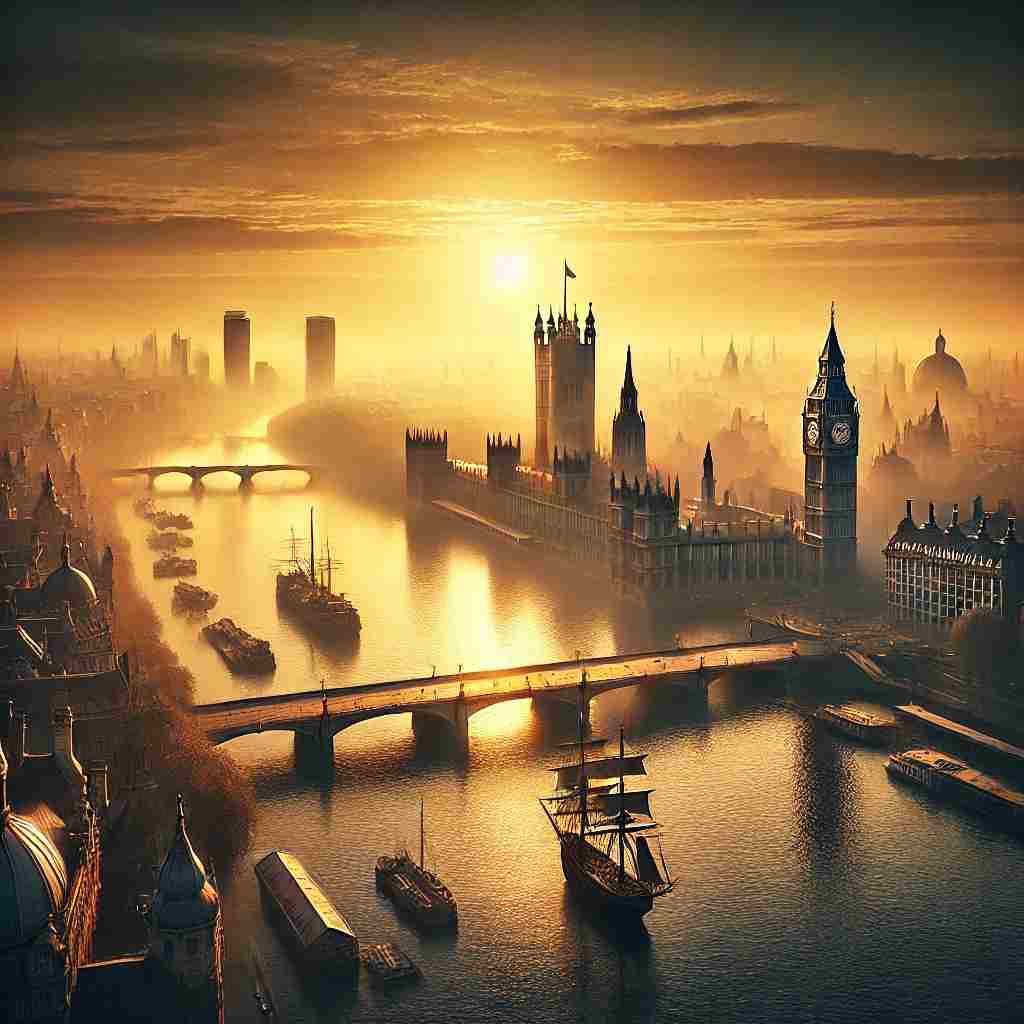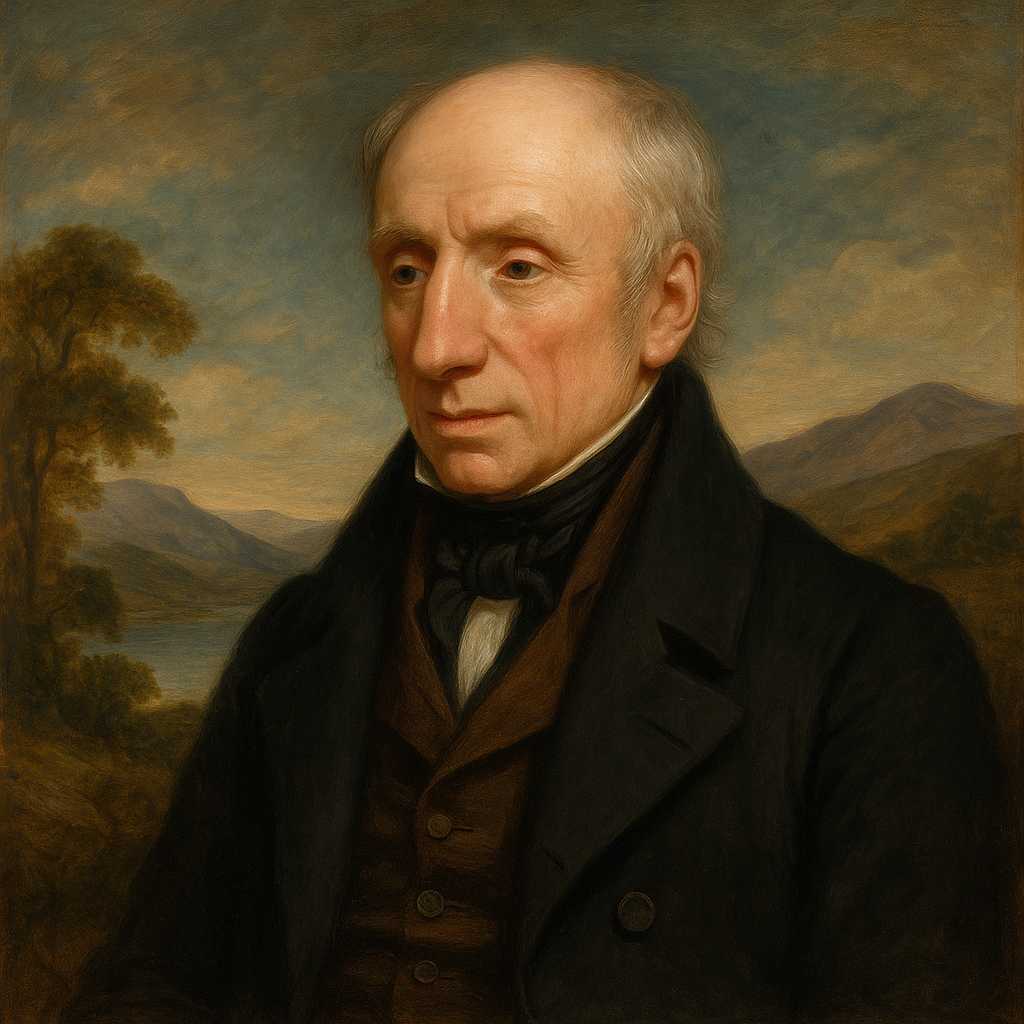Composed upon Westminster Bridge, September 3, 1802
William Wordsworth
1770 to 1850

Earth has not anything to show more fair:
Dull would he be of soul who could pass by
A sight so touching in its majesty:
This City now doth, like a garment, wear
The beauty of the morning; silent, bare,
Ships, towers, domes, theatres, and temples lie
Open unto the fields, and to the sky;
All bright and glittering in the smokeless air.
Never did sun more beautifully steep
In his first splendour, valley, rock, or hill;
Ne'er saw I, never felt, a calm so deep!
The river glideth at his own sweet will:
Dear God! the very houses seem asleep;
And all that mighty heart is lying still!
William Wordsworth's Composed upon Westminster Bridge, September 3, 1802
William Wordsworth's sonnet Composed upon Westminster Bridge, September 3, 1802 exemplifies Romantic poetry’s celebration of natural beauty and its ability to inspire profound emotional and spiritual responses. Written in the form of a Petrarchan sonnet, the poem reflects Wordsworth's reverence for the tranquil beauty of the city of London as viewed from Westminster Bridge in the early morning. The work captures a rare moment of harmony between the natural and urban worlds, embodying themes of stillness, majesty, and awe. This analysis will explore the poem’s structure, use of literary devices, and thematic significance.
Form and Structure
The poem adheres to the structure of a Petrarchan sonnet, comprising an octave (the first eight lines) and a sestet (the final six lines). The rhyme scheme follows the traditional pattern of ABBAABBA in the octave and CDCDCD in the sestet, lending a musical quality that complements its meditative tone. The volta, or thematic shift, occurs subtly between the octave and sestet, transitioning from a detailed description of the city's beauty to a deeper emotional and spiritual reflection.
Literary Devices and Analysis
-
Imagery and Personification
Wordsworth uses vivid imagery to render the cityscape as a living, breathing entity. In the opening lines, he declares, “Earth has not anything to show more fair,” emphasizing the unparalleled beauty of the scene. The personification of the city “wear[ing] / The beauty of the morning; silent, bare” likens it to a serene, majestic figure draped in natural light, enhancing its ethereal quality. This union of the urban and the natural is pivotal to the poem’s Romantic ethos. -
Symbolism
The description of the morning as “silent, bare” symbolizes purity and renewal, untainted by the activity and pollution that would typically characterize an industrial city like London. The "smokeless air" further underscores this theme, suggesting a rare moment of clarity and harmony. -
Contrast
The stillness of the city contrasts with its usual hustle and bustle, allowing Wordsworth to capture a fleeting moment of calm. Phrases like "the river glideth at his own sweet will" highlight this peacefulness, portraying the Thames as a natural force unaffected by human intervention. -
Exclamation and Emotional Response
The speaker’s awe is palpable in lines like “Dear God! the very houses seem asleep,” where the exclamation conveys a spiritual reverence. Wordsworth's choice of diction—“majesty,” “calm,” “mighty heart”—imbues the poem with an almost sacred tone, aligning with his belief in the sublime. -
Repetition and Hyperbole
The repeated use of negation—“Never did sun more beautifully steep,” “Ne'er saw I, never felt, a calm so deep”—emphasizes the unprecedented beauty and emotional impact of the scene. This hyperbolic language reinforces the speaker's astonishment and profound connection to the moment.
Themes
-
Urban-Natural Harmony
A key theme is the rare unity between the natural world and the urban environment. Wordsworth finds beauty not in the city’s activity, but in its stillness, suggesting that even human constructions can attain sublimity when integrated with nature. -
Spiritual Transcendence
The poem’s exclamatory language and invocation of God reflect a spiritual awakening inspired by the scene. The stillness of London becomes a metaphor for the eternal, as the speaker momentarily glimpses a world unmarred by time and human toil. -
The Sublime in the Ordinary
Wordsworth’s focus on a single morning scene underscores the Romantic belief in finding the extraordinary in everyday experiences. The poem transforms a mundane urban setting into a site of profound aesthetic and spiritual significance.
Conclusion
Composed upon Westminster Bridge captures the quintessential Romantic ideal of finding beauty and sublimity in the natural world, even amidst urban landscapes. Through its masterful use of form, imagery, and emotive language, Wordsworth elevates a moment of stillness into an enduring meditation on beauty, tranquility, and spiritual connection. The poem invites readers to reconsider their surroundings and recognize the transient yet profound harmony that can exist between humanity and nature.
This text was generated by AI and is for reference only. Learn more
Want to join the discussion? Reopen or create a unique username to comment. No personal details required!



Comments
No comments yet. Be the first to comment!